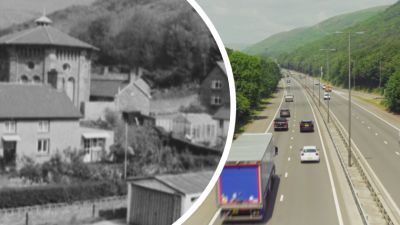The picturesque 'Cotswolds' style village flattened to make way for M4

Every day, thousands of motorists pass through the Port Talbot stretch of the M4, unaware of the historic village that was demolished to make room for the motorway.
Groes was built in the 1830s. There were thatched cottages, a school and a unique octagonal chapel.
The village boasted a beautiful, rustic style of architecture that wouldn’t have seemed out of place in the Cotswolds.
Ian Humphreys has happy memories of growing up in Groes.
He said, “It was an amazing place to live and I sorely miss it.
"You never had to worry about locking your front door. Everyone helped each other and it was just a great community.”
For almost 150 years, Groes remained perfectly preserved. But it found itself on the wrong side of progress. All around Groes, a huge motorway was taking shape.
In the early 1970s, plans were drawn up to extend the M4 and flatten the village. It was highly controversial, and one resident refused to leave.
Romeo Meli took his bed, armchair and television set and protested on the side of the A48 in Port Talbot.
His daughter, Francesca, remembers her father’s fight to save the village.
“He chose that place to live, both of my parents chose to live there." She said.
"Nobody wants to move out of their home, to be forced to move out of their home.
“He was a panel beater in Port Talbot and he’d lost his business when the town was redeveloped.
"Not long afterwards, Groes happened. It must have been tough. He lost his job then lost his home. Our home.”
In 1976, the Meli family finally moved out and the demolition crews moved in. The entire village was torn down.
The only part of Groes that was saved was its octagonal chapel.
It was dismantled, stone by stone, and rebuilt half a mile away. It’s a precious connection with the past. A reminder of a village lost in time.
You can see more on this story, and many other lost landmarks, in Vanished Wales. Friday 13th May at 7pm on ITV Cymru Wales. You can also catch up with the series here.